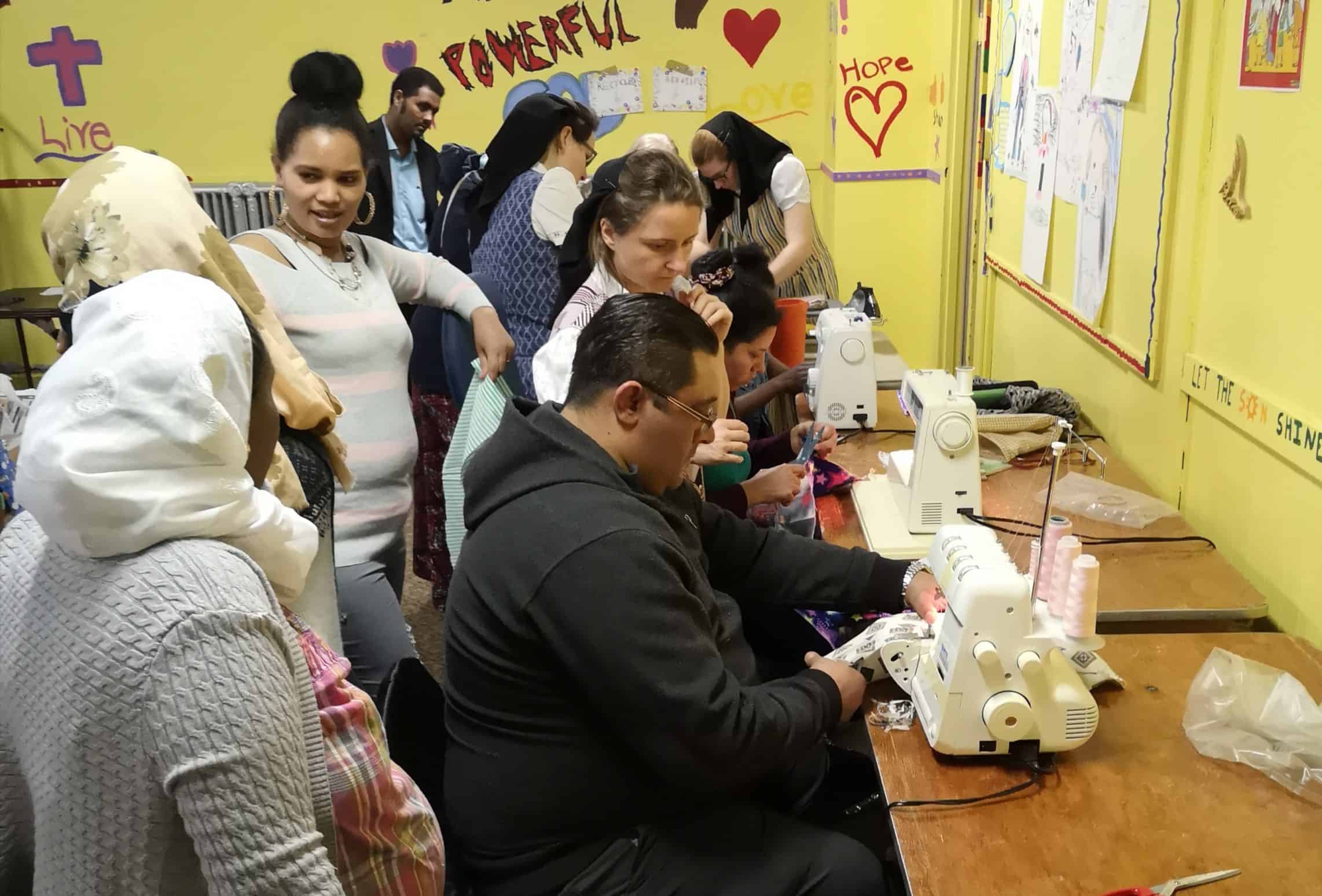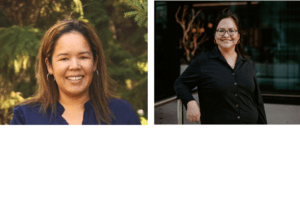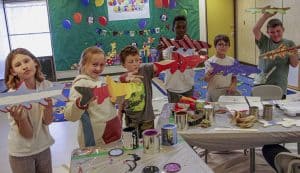From the outside of a stalwart brick church in the north end of Brandon, Manitoba, you might not know it has a brightly-coloured basement that hums with activity.
Men and women, adults and children, hunch over sewing machines on long collapsible tables. They came to Manitoba as refugees from Eritrea, Somalia, and elsewhere. Over their shoulders peer the keen eyes of skilled Hutterite women, checking their work and giving them pointers on creating yoga bags and bread bags, aprons and baby hats.
“Sew Happy” to work hand-in-hand
This diverse group of folks makes up the Hand in Glove Community Co-op. The co-op gives newcomers a way to gain skills and income in their new prairie community. Through its social enterprise arm, called “Sew Happy”, they create products to sell at local businesses.
Members get half of the money from any products they sell – the other half goes towards materials. Each product has a label with information about its creator. This includes their name, where they’re from, and why they love being in Canada.
Wendy Petersen, Community Development Analyst with Community Futures Westman, originally set up the community service co-operative, and said choosing the co-op structure was key. Though a non-profit corporation would have worked much the same way, she wanted the members to have ownership of the enterprise.
“I know how well non-profits can work, but I wanted those participants — the men, the women, the children that were participating in the program — to feel like they owned it,” Petersen said. “…They’re the ones that are going to make the decisions, they’re the ones they’re going to pick the products that we’re going to produce… It was all about the ownership for me, about instilling pride about their workmanship, and the fact that they were steering the boat”.
A useful model for newcomers
Co-ops have been a popular way for newcomers to start businesses for a long time. Often, they are familiar with the model. Petersen said the Hand in Glove’s members often had a food or a water co-op in their home countries.
Some newcomers have started co-ops because they miss certain products from home and organize a way to get them. The Ukrainian Co-op in Regina, Saskatchewan, is a good example. Founded in the 1930s, the co-op imports Eastern European foods and makes authentic Ukrainian sausages in-house.
For others, creating a co-op has been a way to create employment – like members of the International Women’s Catering Co-op in Victoria, BC.
Whatever the reason, the beauty of a co-op is the ability of those who use it to make it their own.
Use what you already have
The co-op was created in 2019, when Petersen drew on her community connections to try something new. She had the forethought to use a co-op structure so she could hand control over to the members. Well-connected to the newcomer community, she inquired about their interest. And she asked people in Brandon to donate sewing machines (and got 14, plus heaps of fabric). The church offered a space for them to work.
Petersen then realized she’d set up an organization to teach sewing skills – but didn’t know how to sew. She did, however, have friends at a Hutterite colony who had sewing skills and had sponsored refugees in the past.
“We asked Green Acres Colony if they would help us to volunteer their time on Saturday to mentor and teach newcomers how to sew. They said ‘absolutely.’ The perfect marriage was formed right there. The bonding that took place between those kids and those Hutterite ladies was unbreakable.”
By participating in the co-op, members have developed new skills, acquired a source of income, and grown their social network.
Petersen is a big believer that rural areas can use available relationships and resources to make a difference.
“We all need to work hand-in-hand when we want to accomplish something,” she said. “The world needs so much more of that right now. The tasks and issues we find in our lives are so much easier to overtake when you have the hand of a group of people to lift you up over the wall, to see that there is something on the other side. That you can make a difference.”

 Written by
Written by 



